Abstract
Lolium rigidum Gaud. biotype SLR31 is resistant to the herbicide diclofop-methyl and cross-resistant to several sulfonylurea herbicides. Wheat and the cross-resistant ryegrass exhibit similar patterns of resistance to sulfonylurea herbicides, suggesting that the mechanism of resistance may be similar. Cross-resistant ryegrass is also resistant to the wheat-selective imidazolinone herbicide imazamethabenz. The cross-resistant biotype SLR31 metabolized [phenyl-U-14C]chlorsulfuron at a faster rate than a biotype which is susceptible to both diclofop-methyl and chlorsulfuron. A third biotype which is resistant to diclofop-methyl but not to chlorsulfuron metabolized chlorsulfuron at the same rate as the susceptible biotype. The increased metabolism of chlorsulfuron observed in the cross-resistant biotype is, therefore, correlated with the patterns of resistance observed in these L. rigidum biotypes. During high performance liquid chromatography analysis the major metabolite of chlorsulfuron in both susceptible and cross-resistant ryegrass coeluted with the major metabolite produced in wheat. The major product is clearly different from the major product in the tolerant dicot species, flax (Linium usitatissimum). The elution pattern of metabolites of chlorsulfuron was the same for both the susceptible and cross-resistant ryegrass but the cross-resistant ryegrass metabolized chlorsulfuron more rapidly. The investigation of the dose response to sulfonylurea herbicides at the whole plant level and the study of the metabolism of chlorsulfuron provide two independent sets of data which both suggest that the resistance to chlorsulfuron in cross-resistant ryegrass biotype SLR31 involves a wheat-like detoxification system.
Full text
PDF

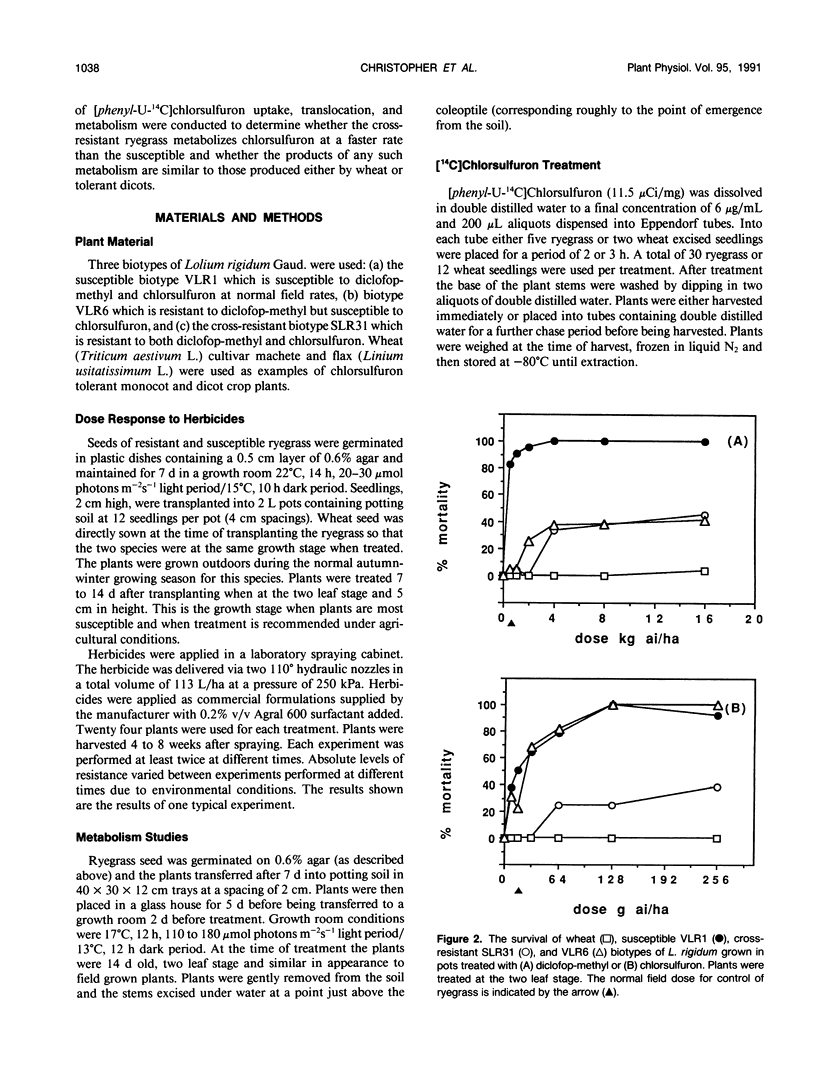
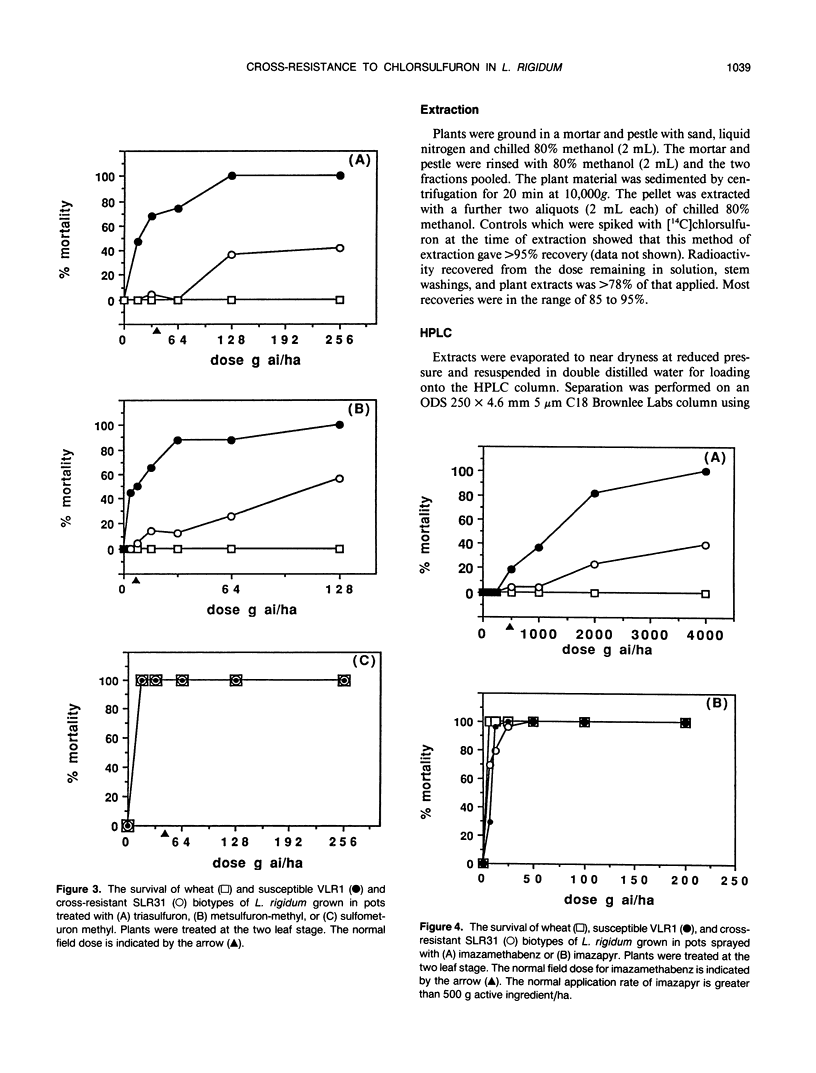

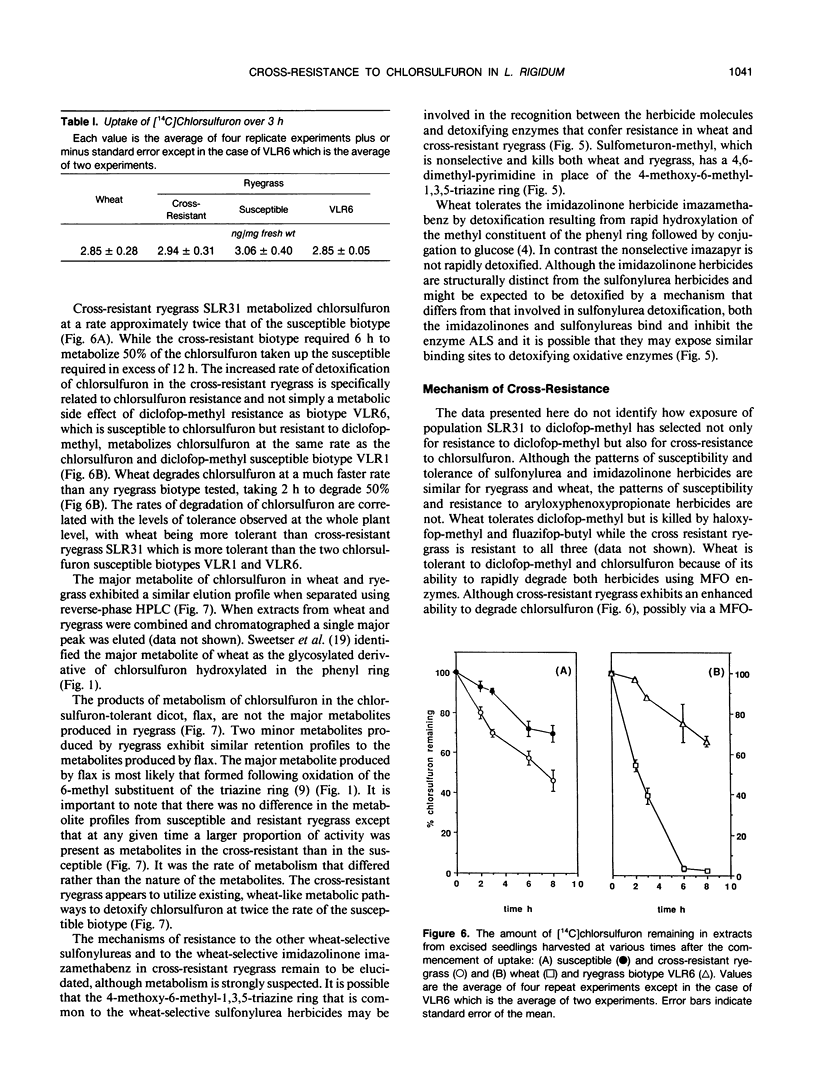
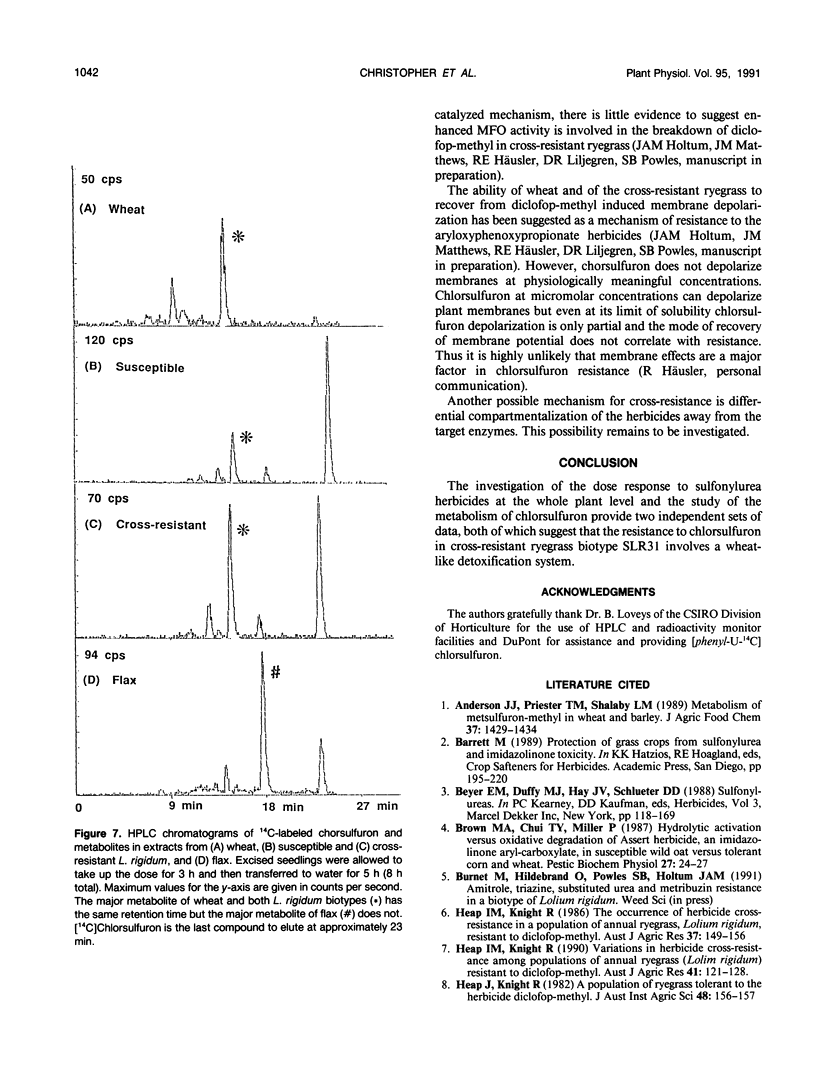
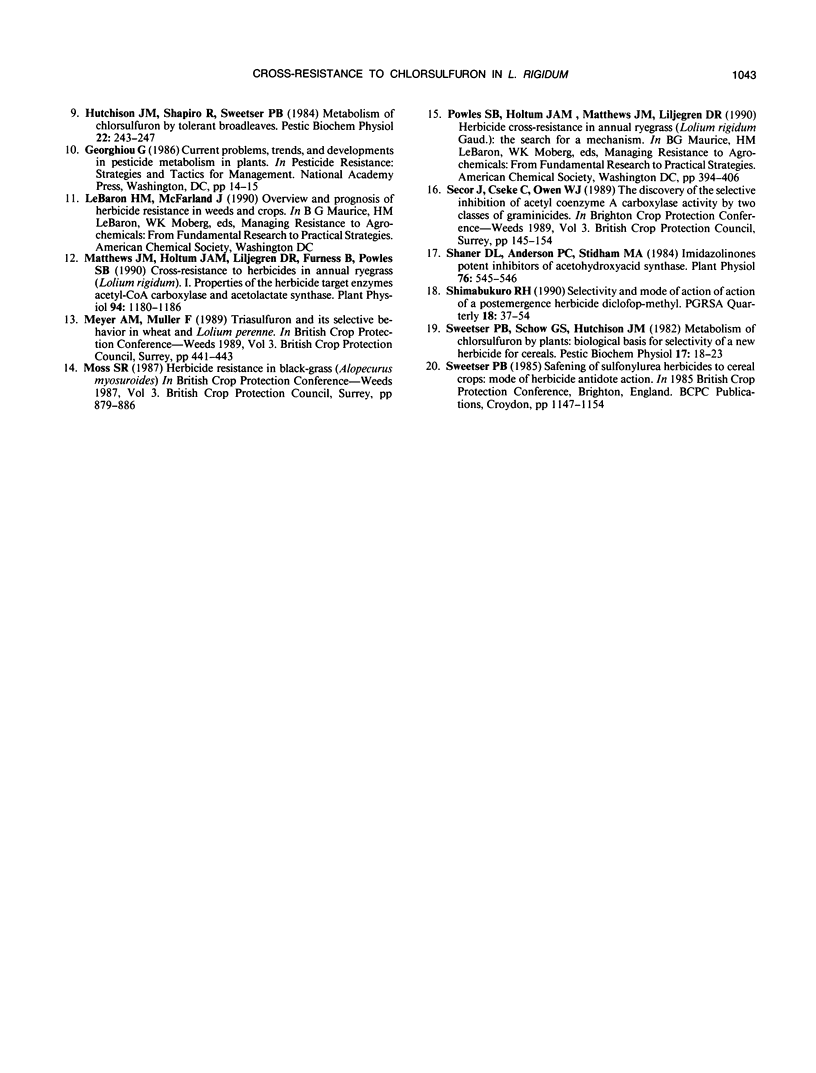
Selected References
These references are in PubMed. This may not be the complete list of references from this article.
- Matthews J. M., Holtum J. A., Liljegren D. R., Furness B., Powles S. B. Cross-Resistance to Herbicides in Annual Ryegrass (Lolium rigidum): I. Properties of the Herbicide Target Enzymes Acetyl-Coenzyme A Carboxylase and Acetolactate Synthase. Plant Physiol. 1990 Nov;94(3):1180–1186. doi: 10.1104/pp.94.3.1180. [DOI] [PMC free article] [PubMed] [Google Scholar]
- Roy T. M., Fleming D., Anderson W. H. Tularemic pneumonia mimicking Legionnaires' disease with false-positive direct fluorescent antibody stains for Legionella. South Med J. 1989 Nov;82(11):1429–1431. doi: 10.1097/00007611-198911000-00023. [DOI] [PubMed] [Google Scholar]
- Shaner D. L., Anderson P. C., Stidham M. A. Imidazolinones: potent inhibitors of acetohydroxyacid synthase. Plant Physiol. 1984 Oct;76(2):545–546. doi: 10.1104/pp.76.2.545. [DOI] [PMC free article] [PubMed] [Google Scholar]


